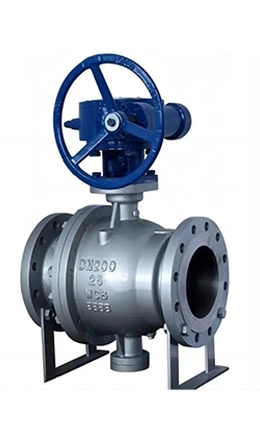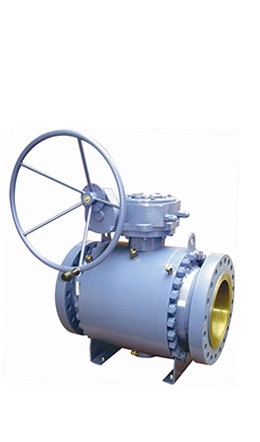A side-entry ball valve features a multi-piece body (split into two or three sections) bolted together laterally, allowing the ball and internals to be installed from the side. While offering sturdy construction, it requires full disassembly for maintenance, increasing downtime. Due to multiple gasket joints, it has higher leak risks compared to top-entry valves. Typical materials (stainless steel + PTFE seats) support -20°C to 200°C; metal seats extend this to 400°C, and specialized designs handle cryogenic conditions (-196°C). Ideal for general industrial use but less suited for high-purity or critical sealing applications.


1. Construction and Assembly
Side-Entry Ball Valve:
Body Construction: Split into two or three pieces (e.g., body, end caps) bolted together laterally (from the sides).
Ball Installation: The ball and internals are inserted through the side during assembly.
Sealing: Gaskets or seals between body sections prevent leaks.
Top-Entry Ball Valve:
Body Construction: Single-piece body with a removable bonnet/cover at the top.
Ball Installation: The ball and seats are inserted or serviced through the top opening.
Sealing: Relies on a single gasket between the body and bonnet.
2. Maintenance and Repair
Side-Entry Valve:
Disassembly Required: Must be removed from the pipeline and split into pieces to access internals.
Complex Maintenance: Time-consuming for seat or seal replacement.
Downtime: Higher due to pipeline disconnection.
Top-Entry Valve:
In-Line Maintenance: Internals (ball, seats, seals) can be accessed by removing the top bonnet while the valve remains in the pipeline.
Simpler Repairs: Reduces downtime and labor costs.
Ideal for Critical Systems: Preferred in industries where shutdowns are costly (e.g., oil and gas).
3. Leak Potential
Side-Entry Valve:
More potential leak paths at body joints (gaskets between split sections).
Less reliable for hazardous or high-purity applications.
Top-Entry Valve:
Fewer leak paths (only the top bonnet seal).
Preferred for critical sealing (e.g., toxic fluids, high-pressure gas).
The typical temperature range for a side entry ball valve depends on its construction materials, particularly the body and seat materials.
1. Standard Materials (Stainless Steel Body + PTFE Seats):
Temperature Range: -20°C to 200°C
PTFE (Teflon) seats provide excellent sealing at moderate temperatures but degrade above 200°C.
2. High-Temperature Applications (Metal Seats):
Temperature Range: Up to 400°C
Metal seats (e.g., stainless steel, Inconel) allow operation at higher temperatures, though sealing efficiency may vary.
3. Cryogenic Applications (Specialized Materials):
Temperature Range: As low as -196°C
Materials like stainless steel (e.g., SS316L) or cryogenic-grade components prevent brittleness in extreme cold.
4. Pressure Considerations:
Temperature limits may decrease under high pressure; always cross-reference pressure-temperature ratings (e.g., ANSI/ASME standards).
5. Polymer Alternatives:
Advanced polymers (e.g., PEEK, reinforced PTFE) can extend the upper range slightly (up to 300°C) but are less common.
